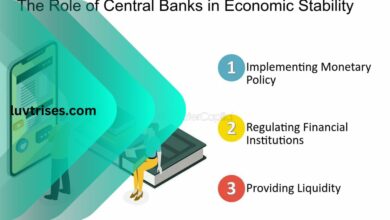Investing in Volatile Markets: Tips for Risk Management

Investing in Volatile Markets: Tips for Risk Management
In today’s fast-paced financial landscape, investing in volatile markets can be both thrilling and nerve-wracking. The potential for high returns is enticing, but the risks involved can be equally daunting. As an investor, it is crucial to have a solid risk management strategy in place to navigate through turbulent market conditions successfully. This article will delve into essential tips for managing risks while investing in volatile markets, helping you make informed decisions and safeguard your investments.
Understanding Market Volatility
Market volatility refers to the degree of variation in trading prices over time. In volatile markets, prices can fluctuate rapidly and unpredictably, leading to increased uncertainty and risk for investors. Understanding the factors that contribute to market volatility, such as economic indicators, geopolitical events, and investor sentiment, is essential for effective risk management.
Diversification is Key
One of the fundamental principles of risk management in volatile markets is diversification. By spreading your investments across different asset classes, industries, and geographical regions, you can reduce the impact of market fluctuations on your overall portfolio. Diversification helps mitigate risk and protect your investments from significant losses during turbulent times.
Set Realistic Investment Goals
Before investing in volatile markets, it is crucial to establish clear and realistic investment goals. Determine your risk tolerance, investment horizon, and expected returns based on your financial objectives. Setting realistic goals will help you stay focused during market fluctuations and avoid making impulsive decisions driven by emotions.
Stay Informed and Do Your Research
In volatile markets, staying informed and conducting thorough research are essential for making informed investment decisions. Keep abreast of market trends, economic developments, and company news that may impact your investments. Utilize reliable sources of information and consult with financial experts to gain valuable insights into market conditions.
Implement Stop-Loss Orders
Stop-loss orders are a risk management tool that can help protect your investments from significant losses in volatile markets. By setting predetermined price levels at which you are willing to sell your assets, you can limit potential losses and preserve capital. Implementing stop-loss orders can help you maintain discipline and avoid emotional decision-making during market downturns.
Monitor Your Portfolio Regularly
Regularly monitoring your investment portfolio is crucial in volatile markets. Keep track of your asset allocation, performance metrics, and market trends to identify potential risks and opportunities. By staying vigilant and proactive, you can make timely adjustments to your portfolio to mitigate risks and capitalize on market fluctuations.
Consider Hedging Strategies
Hedging strategies, such as options, futures, and derivatives, can be effective tools for managing risks in volatile markets. These financial instruments allow you to protect your investments against adverse price movements and volatility. However, it is essential to understand the complexities of hedging strategies and seek professional advice before incorporating them into your investment portfolio.
Stay Calm and Avoid Emotional Decision-Making
Emotions can cloud judgment and lead to impulsive decision-making, especially in volatile markets. It is essential to stay calm, rational, and disciplined when managing your investments during market fluctuations. Avoid making hasty decisions based on fear or greed and stick to your predetermined investment strategy.
Review and Rebalance Your Portfolio Periodically
Periodically reviewing and rebalancing your investment portfolio is essential for maintaining optimal asset allocation and risk management. As market conditions change, your investment goals and risk tolerance may also evolve. By reassessing your portfolio regularly and making necessary adjustments, you can ensure that your investments remain aligned with your financial objectives.
Seek Professional Advice When Needed
When navigating volatile markets, seeking professional advice from financial advisors, wealth managers, or investment experts can provide valuable guidance and insights. Experienced professionals can help you develop a customized risk management strategy, optimize your investment portfolio, and make informed decisions based on your financial goals and risk tolerance.
FAQs
1. What are the main risks associated with investing in volatile markets?
Investing in volatile markets carries various risks, including market fluctuations, economic uncertainty, geopolitical events, and liquidity risks. These factors can lead to significant price volatility and potential losses for investors.
2. How can diversification help mitigate risks in volatile markets?
Diversification involves spreading investments across different asset classes, industries, and regions to reduce the impact of market fluctuations on a portfolio. By diversifying, investors can minimize risk exposure and protect their investments from adverse market conditions.



